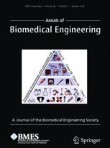
Abstract
Drivers often react to an impending collision by bracing against the steering wheel. The goal of the present study was to quantify the effect of bracing on neck muscle activity and head/torso kinematics during low-speed front and rear impacts. Eleven seated subjects (3F, 8 M) experienced multiple sled impacts (Δv = 0.77 m/s; apeak = 19.9 m/s2, Δt = 65.5 ms) with their hands on the steering wheel in two conditions: relaxed and braced against the steering wheel. Electromyographic activity in eight neck muscles (sternohyoid, sternocleidomastoid, splenius capitis, semispinalis capitis, semispinalis cervicis, multifidus, levator scapulae, and trapezius) was recorded unilaterally with indwelling electrodes and normalized by maximum voluntary contraction (MVC) levels. Head and torso kinematics (linear acceleration, angular velocity, angular rotation, and retraction) were measured with sen sors and motion tracking. Muscle and kinematic variables were compared between the relaxed and braced conditions using linear mixed models. We found that pre-impact bracing generated only small increases in the pre-impact muscle activity (< 5% MVC) when compared to the relaxed condition. Pre-impact bracing did not increase peak neck muscle responses during the impacts; instead it reduced peak trapezius and multifidus muscle activity by about half during front impacts. Bracing led to widespread changes in the peak amplitude and timing of the torso and head kinematics that were not consistent with a simple stiffening of the head/neck/torso system. Instead pre-impact bracing served to couple the torso more rigidly to the seat while not necessarily coupling the head more rigidly to the torso.




Δεν υπάρχουν σχόλια:
Δημοσίευση σχολίου